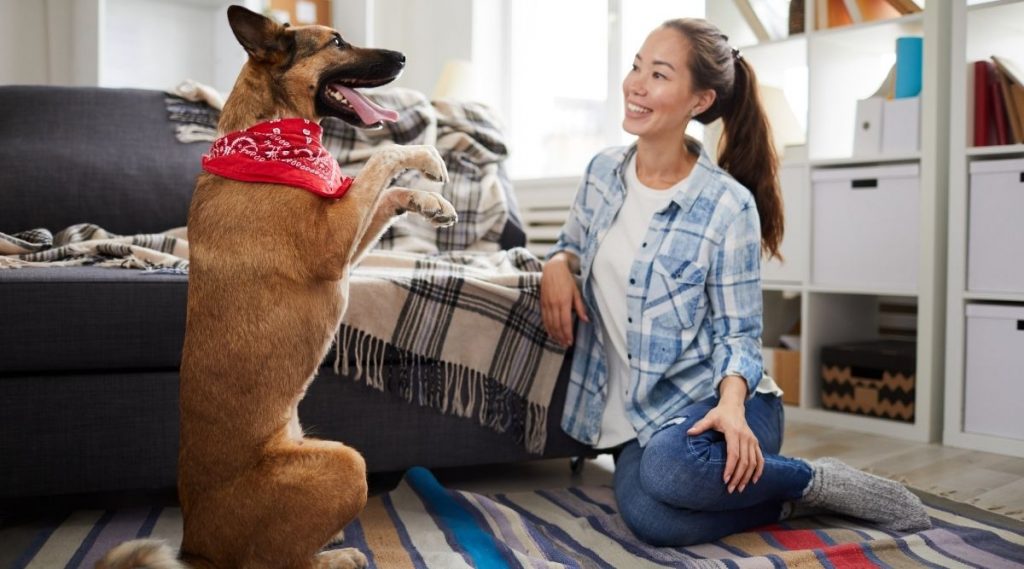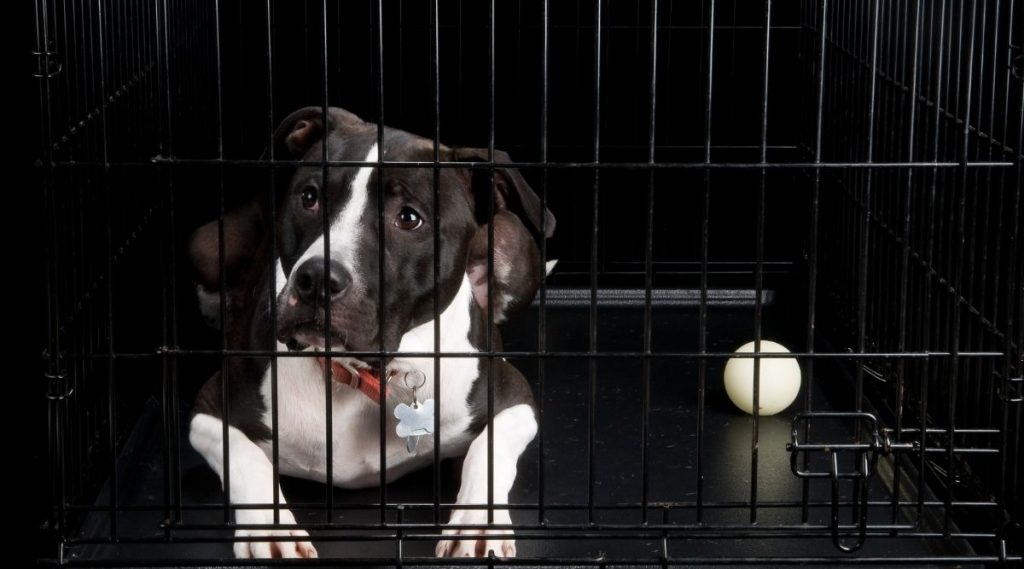This post may contain affiliate links. Please read my disclaimer policy
Crate training has been a tried and tested way of integrating a puppy into a domestic setting for a long time now.
It is an essential part of training a dog that has is supported by most breeders and trainers and is a perfect way to establish boundaries, rules, and hygiene for your new pet.
If you’re new to the idea of crate training, it might seem as if you’re forcing your dog into a small, enclosed space, but it’s actually to help your puppy settle in and feel more comfortable in their new environment.
Crate training does a variety of different things – it makes sure your puppy is safe and secure overnight, unable to wander around and get themselves in trouble, gives them a clear den that is their place in the world and allows them to have a break from the hectic events of daily life in a new household.
Providing you have the right kind of crate and you’ve made the right kind of preparations, crate training will work for any size dog and can even help to train older animals.
If you’ve never crate trained before, we know it might seem difficult or even overwhelming.
How can you be sure that’s you’ve bought the correct crate, that you’ve taken the correct steps to make sure your new puppy is as safe and secure as possible?
More than that, how can you be sure you’re using the crate to train them correctly?
If you find yourself confused about crate training – then have no fear!
This is a short guide that will walk you through each step of the process.
From what crate to buy, to how to set boundaries and train your dog so that they become a normal part of your household! We’ll take you through each step of the way.
Contents
Buying The Correct Crate
When beginning crate training, it’s of vital importance that you get the right crate for your puppy.
The main two things you want to keep in mind when shopping are size and security. You will need to not only buy a crate that will be the right size for them now but also over the next few months as they grow.
Puppies grow fast and you want to make sure they never outgrow their crate. Eventually, you will remove it and replace it with a bed, but not because they’ve gotten too big for it.
The second thing when it comes to buying a crate is to make sure that it is well made and secure. This means checking it is of a good material that can’t be broken or chewed through, and making sure that it has a secure lock.
This lock is not to punish your dog, but to keep them safe throughout the night.
Create Positive Association
This is a very important part of crate training. The idea is that the crate will soon become your puppy’s own space.
It has to be a place they want to go to, where they retreat to if they get scared or are tired. As a trainer, it is your job to make sure that they have a positive association with it from the first time they encounter it.
To create this positive association there are a number of things you can do. Firstly you want to put favorite items of your puppy inside – these can include toys, kongs, blankets, and treats they love.
Ideally, it would be great if your puppy found the crate itself. If you can create this open-door environment where the puppy finds the crate as a safe, warm place with its favorite treats inside, it’s very likely that it will go back there on its own.
Another thing you can do to create a positive association is to feed them inside their crate. Dogs always get excited when food is around, so it can be great to tie these two things together.
Put your dog’s bowl in or outside their crate so that they associate the crate with food.
If you find that your puppy does go to the crate on its own, then you should try and reward them for this. You can give them treats for this behavior, as well as attention and a good scratch behind the ears.
Ultimately, every little thing you do to associate the crate with positivity will be great to get your puppy to see it as its home.
Build Up The Time Your Dog Is In Its Crate
You want to slowly build the time in which your puppy is left in the crate. The goal is to eventually have your dog sitting in their crate for periods without getting scared or nervous.
This isn’t something you can achieve right away. Hopefully, if you introduce your puppy to its crate in the correct way, it will begin to go there on its own. But that’s not the same thing as being comfortable there for long periods.
Once they can spend 30 minutes or so without it being afraid, you’ll be able to leave it there for short periods when you leave the house. It’s important to state that you want to couple together the command of ‘crate’ here with giving your dog a treat.
This will build a more positive association between being put in their crate and getting a treat.
You will want your puppy to become familiar with you leaving the house, you giving them a treat inside their crate, and finally, you eventually coming back.
If your puppy can get used to this routine then it won’t be so scared and will be able to be left alone for long periods of time.
It’s the same process for nighttime.
You want to make sure your dog understands the routine of when it is night, it is time for them to spend time in their crate.
When you put them in their crate initially, it is normal for them to whine in the night, but try to learn the difference between whining to test you and whining for genuine help.
The best way to stop your dog from whining is to ignore them, eventually, they will learn to be quiet. If you give them attention every time they whine it is likely they will continue to do this.
We also recommend giving your dog a filled kong if you’re planning on leaving them in the crate for a long period. This will give them something that will stimulate them and make them more content in their crate.
Important note: any time you leave your dog on its own, make sure it is in a shaded area with constant access to water.
Removing Your Crate

Eventually, it will be obvious that there is no longer any reason to crate your dog. Once they are better trained, they will have no need to have a crate. It’s hard to say exactly when this is, and it can change depending on the dog.
Ultimately, you as the owner will have to decide this.
As with how you introduced your puppy to spending periods in its crate alone, you will want to do the same when taking the crate away.
Begin to leave them alone without the crate for short periods of time and see how they get on – or more importantly, what they get up to.
If you’re still seeing behavioral issues then you might want to take more time to allow them to be comfortable in an open space.
If their behavior without the crate is the same as it would be when it’s there, then you know there’s a good chance that your dog no longer needs it.
When you replace the crate with a dog bed, make sure it has the same items as the crate, and perhaps make sure it’s in the same place. This will smooth the transition and your dog will likely feel no difference between the two.
Final Thoughts
There is quite a lot to crate training, and as a dog owner, you need to make sure you’re monitoring your pet each step of the way.
A good rule, generally, is that if it’s working and your dog is happy and healthy, then don’t stop doing it!
Crate training can be difficult, especially in the early stages, but keep at it, set clear rules, boundaries, and routines and your dog is sure to learn.
Remember the most important thing about crate training is getting your dog accustomed to your home, and making sure that it is part of your family.
If you keep these things in mind, then you can’t go wrong!
We hope this guide has given you some information about crate training and that you will be able to use it as a basis for how to crate train your dog.

